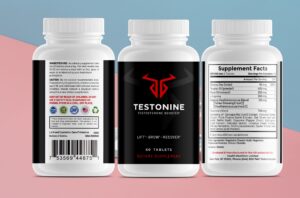It’s often claimed that exercise, especially strength training, can sharply spike testosterone production in men. But what does the actual scientific evidence show? Can working out really increase testosterone levels over the long run or only transiently? This article closely examines how different training modalities affect male testosterone production and clearance based on published research.
Understanding Testosterone Kinetics
Before analyzing specific exercise effects, it’s important to understand baseline testosterone kinetics. Total circulating testosterone concentrations are determined by:
1) Biosynthesis rates
2) Clearance rates
Production and clearance are controlled through independent mechanisms. Intense exercise acutely spikes testosterone but also accelerates clearance, meaning single bouts cause only temporary blips. Whether athletic training chronically alters daily testosterone exposure depends on sustained changes in these kinetic markers.
Reviewing the Research on Exercise and Testosterone
A wealth of data now elucidates exercise’s intricate effects on testosterone metabolism:
Resistance Training Effects
Of all exercise modalities, heavy weight lifting appears most likely to support healthy testosterone long-term. Systematic reviews find resistance training programs consistently increase baseline testosterone levels in men compared to sedentary controls. However, gains are generally modest, ranging between 15-25% on average depending on frequency, volume, and intensity.
This study exemplified typical effects. 500mg testosterone increased ~15% following 24 workout sessions but remained within normal ranges rather than supra physiological.
Endurance Training Effects
Contrary to popular belief, endurance training like marathon running generally reduces testosterone levels notably over months/years of high volume training according to meta-analyses. However, evidence finds short-duration, high-intensity intervals can avoid this negative effect and instead increase testosterone slightly like resistance training.
This analysis found endurance volumes over 100 km/week reduced testosterone by up to 20% whereas intervals increased T slightly.
The takeaway is long runs suppress testosterone but brief, explosive intervals may acutely spike levels. Either way, aerobic training fails to increase baseline levels chronically based on current evidence.
Key Mechanisms Behind Exercise Effects
If you understand the key mechanisms driving acute spikes versus chronic changes, you can leverage training more effectively:
Acute Spikes:
Heavy lifts or sprints massively strain muscles, triggering substantial testosterone release up to 60 minutes post-exercise. But simultaneously, steroid hormone binding proteins increase, accelerating testosterone clearance rates back to baseline within 24 hours regardless of training volume.
Chronic Changes:
Only sustained, progressive overload strength training consistently alters baseline testosterone levels long-term. Adding muscle mass incrementally over months/years expands overall storage capacity and androgen receptor density. This upregulates the hypothalamic-pituitary-gonadal axis to match greater anabolic demand through heightened testosterone biosynthesis.
In summary, hormones react differently depending on time scale. This explains why most post-workout spikes are transient without fundamentally raising daily levels chronically.
The Bottom Line
For maximizing testosterone, current evidence clearly supports incorporating brief, high intensity anaerobic bursts while avoiding overtraining thresholds from excessive endurance exercise. Above all, heavy compound lifts consistently emerge as the most reliable activity for gradually elevating daily testosterone exposure in men long-term by continually placing higher demands on the muscular system to adapt.



